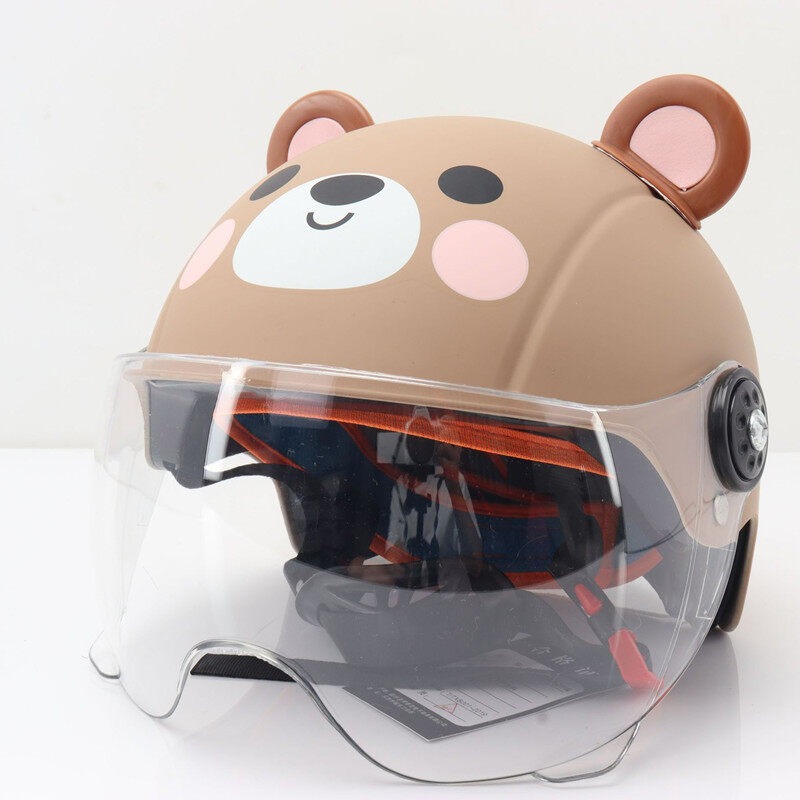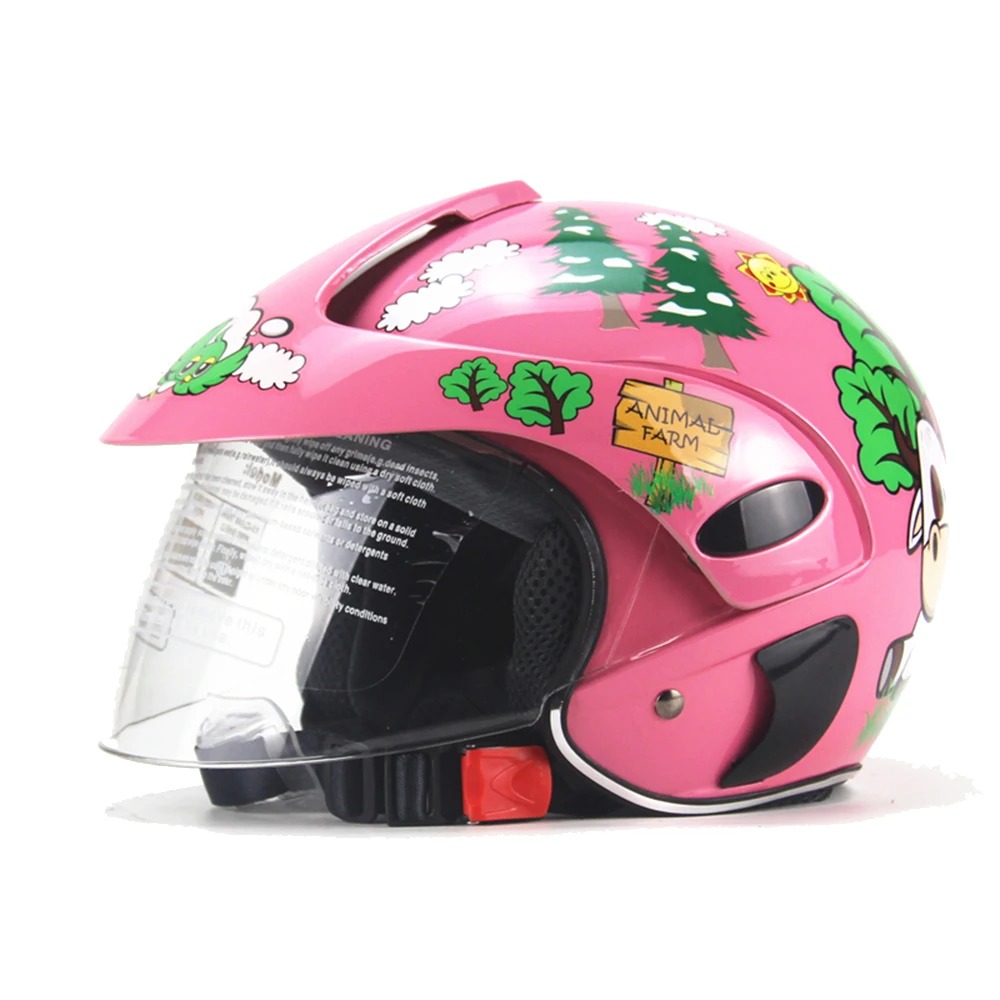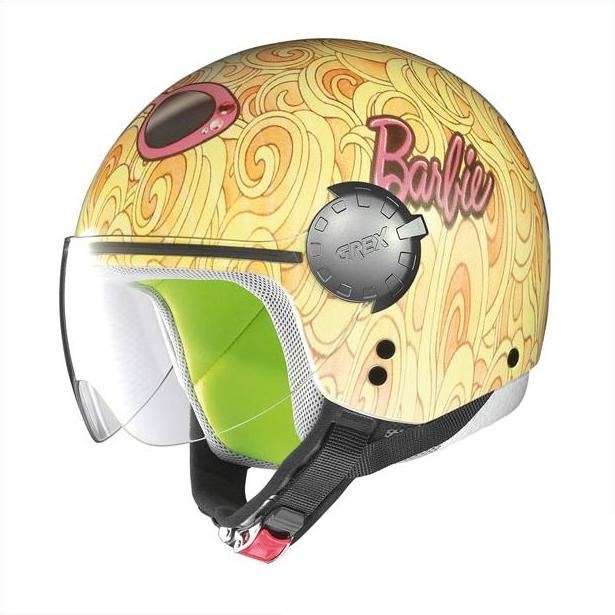Importance of Safety for Young Riders
When it comes to young riders, safety is paramount. Kids lack the experience and skill of adult motorcyclists, making them more vulnerable on the road. A fall that might be a minor mishap for an adult can have serious consequences for a child. This fact underscores the critical importance of choosing high-quality kids motorcycle helmets that can provide optimal protection.
Protective gear, especially helmets, is the first line of defense against head injuries. While learning to ride, kids may be prone to more spills, making a well-constructed helmet an essential piece of safety equipment. Remember, a child’s head is still developing, and even a small impact can cause significant harm.
Moreover, using helmets teaches young riders about safety practices from an early age. It instills a mindset that prioritizes personal safety, which will be invaluable throughout their riding years. Parents and guardians must therefore ensure that they not only provide the safest equipment but also reinforce the message that safety is non-negotiable.
Kids motorcycle helmets, therefore, are not just accessories; they are crucial safeguards that protect young riders from harm. With the right helmet, you can greatly reduce the risk of injury, allowing kids to enjoy the thrill of riding while staying safe.
Key Features of Kids Motorcycle Helmets

When selecting kids motorcycle helmets, several key features must be considered to ensure maximum safety and comfort. Here’s what to look for:
High Impact Resistance
The primary function of any motorcycle helmet is to absorb impact and protect the head during a collision. Helmets designed for kids should have a thick, dense shell made from materials like polycarbonate or fiberglass that can disperse the force of impact effectively.
Proper Ventilation
A well-ventilated helmet is essential for comfort, especially in warm weather. Look for helmets with multiple air vents that allow airflow, helping to keep the rider cool and prevent the visor from fogging up during rides.
Lightweight Design
Children have weaker neck muscles compared to adults. A lightweight helmet minimizes the strain on a child’s neck, making it more comfortable for them to wear the helmet for longer periods. The use of modern materials can contribute to a helmet’s lightness while still ensuring safety.
Adjustable Fitting Mechanisms
Kids grow fast, and a helmet that fits well today might become snug very quickly. Helmets with adjustable interior paddings or retractable straps allow for a more personalized and longer-lasting fit.
Bright Colors and Patterns
Kids motorcycle helmets come in various bright colors and patterns. Not only are these designs more appealing to children, but they also improve visibility on the road, adding an extra layer of safety.
Selecting a helmet with these features can provide young riders with the safety they need and the comfort they desire, making their journeys safer and much more enjoyable.
Sizing and Fit: Ensuring the Perfect Match

Ensuring a perfect fit is critical when selecting kids motorcycle helmets. Head size and shape vary, so a helmet must fit snugly without causing discomfort. Measure your child’s head circumference before shopping. This measurement guides you in choosing the right helmet size. Each helmet brand may have a different sizing chart, so compare your child’s head size with the specific brand’s chart.
Measuring Head Circumference Correctly
Use a soft tape measure to wrap around your child’s head. Place it above the eyebrows and ears, which is the widest part of the head. Make sure the tape measure is not too tight or too loose. Write down the measurement and match it to the helmet size chart you’ve chosen.
Checking for Proper Helmet Fit
Once you have a helmet, check for a proper fit. The helmet should sit squarely on the head and should not tilt back or twist. The chin strap must be snug but not too tight, allowing minimal movement. Padding should touch the face evenly, without pressing too hard on any area. Leave no gaps between the head and the helmet’s interior.
Importance of a Growing Room
Kids grow quickly, so consider a little room for growth when sizing helmets. However, don’t pick a very large helmet; excess space defeats the purpose of protection. Look for helmets with adjustable interior paddings or inserts that can be removed as your child grows.
Trying on Multiple Sizes and Brands
It’s wise to try several helmets from different brands. Like shoes, helmets from various manufacturers may fit differently. A medium in one brand could be a small or large in another. Always test helmets for fit and comfort before making a purchase.
Proper sizing and fit ensure that kids motorcycle helmets provide optimal safety. Take the time to get it right, and your child’s rides will be both enjoyable and secure.
Latest Safety Standards and Certifications for 2024
The year 2024 brings updated safety standards and certifications for kids motorcycle helmets, ensuring enhanced protection for young riders. Adhering to these new standards is crucial for manufacturers and consumers alike.
Understanding DOT and CPSC Certifications
The Department of Transportation (DOT) and Consumer Product Safety Commission (CPSC) provide certifications for motorcycle helmets. These certifications assure that the helmets meet specific safety criteria.
A helmet that has DOT certification means it has passed rigorous impact tests. CPSC-certified helmets ensure they are suitable for children, considering factors like size, weight, and durability.
Importance of ECE Standards
The Economic Commission for Europe (ECE) sets another significant standard in helmet safety. The ECE certification includes tests for impact absorption, penetration resistance, and strap system strength.
In 2024, updated ECE standards will further tighten safety measures. These will include advanced testing techniques and updated criteria reflecting the latest research in injury prevention.
Innovation in Snell Certification
Snell certification is renowned for its rigorous testing beyond governmental standards. In 2024, Snell introduces new criteria that focus on rotational impacts, which are common in motorcycle accidents involving children.
Kids motorcycle helmets that achieve Snell certification in 2024 will offer superior protection. They utilize cutting-edge materials and design principles that excel in new test methods.
By choosing helmets that meet these updated standards and certifications, parents can provide the best head protection for their children. Always look for these certifications when purchasing kids motorcycle helmets to ensure maximum safety and compliance with 2024 regulations.
Innovative Materials and Technologies in Helmet Construction
As the demand for better protection grows, so does the innovation in helmet construction. Manufacturers are harnessing new materials and technologies to enhance kids motorcycle helmets. The year 2024 has seen remarkable advancements, making helmets not only safer but also more comfortable and functional for young riders.
Lightweight, High-Strength Materials
Modern helmets integrate materials like carbon fiber and advanced polymers. These provide high strength without adding weight. A light helmet is crucial for a child’s comfort and neck support during rides.
Enhanced Shock Absorption
Engineers have developed new foam types for better shock absorption. These foams compress upon impact, reducing the force transmitted to the child’s head. Multi-density foam layers now work together to cushion blows more effectively.
Improved Strap Systems and Buckles
Safety also comes from a helmet’s secure fit. Updated strap systems and quick-release buckles ensure that helmets stay in place during an accident. They are also easier for kids to manage, promoting independence.
Advanced Ventilation Systems
An effective ventilation system is key for comfort. New designs offer adjustable vents that allow for customized airflow. This leads to better temperature control and prevents the visor from fogging, ensuring clear visibility.
Smarter Helmet Interiors
The interiors of kids motorcycle helmets now feature materials that wick away moisture and inhibit bacterial growth. This keeps the helmet clean and odor-free, which is especially important for children who may be sensitive to irritants.
These innovations reflect the industry’s commitment to safety and comfort. By integrating such technologies, manufacturers provide helmets that kids would want to wear, making safety a more appealing choice for young riders.
Style vs. Safety: Striking the Right Balance

When picking kids motorcycle helmets, style and safety must balance. Kids want cool-looking gear. Parents need safety above all. Find helmets that offer both.
Prioritize Safety Features Over Style
Always put safety first. Look for DOT, CPSC, and ECE certifications. These prove the helmet can protect.
Let Kids Have a Say in the Design
Involve kids in choosing the helmet design. They’re more likely to wear a helmet they like. Pick bright colors or patterns for visibility and fun.
Balance Safety with Comfort and Looks
A safe helmet also needs to be comfy. Comfort means kids keep the helmet on. Safety doesn’t mean boring. Find helmets that are safe, comfortable, and cool.
Top Rated Kids Motorcycle Helmets of 2024
In 2024, several kids motorcycle helmets stand out for their safety, comfort, and style. Parents should consider these when shopping for protective gear for their young riders.
Helmets with Superior Impact Protection
First on our list are helmets with advanced impact protection. They use materials like multi-layered EPS foam and tough outer shells. These features help absorb shock from impacts.
Helmets with Cutting-Edge Design
Next, we find helmets that mix safety with style. They have cool graphics and designs. Still, they don’t compromise on secure straps and proper fitting.
Lightweight Helmets
Lightweight design is essential. It ensures kids wear the helmets without feel of heaviness. Top helmets are often made with composite materials to achieve this balance.
Ventilated Helmets for Breathability
Also rated highly are helmets with great ventilation. Such helmets prevent overheating and discomfort. Kids can ride for longer while staying cool and focused.
Adjustable Helmets for Growing Kids
Many top-rated helmets come with adjustable parts. This means they can grow with your child. They are good value for money as they last longer.
Helmets Meeting 2024 Safety Standards
The best helmets adhere to the latest DOT, CPSC, and ECE standards. They have been rigorously tested and are guaranteed to provide optimal protection.
Parents must pick helmets considering these factors. They should check ratings and reviews for the latest models. Safety is the priority, but finding a helmet that kids love to wear is a close second. By choosing a top-rated helmet, parents can ensure their kids have fun and stay safe on the road.
Tips for Educating Kids on Helmet Safety
Teaching kids about helmet safety is crucial. Parents play a key role. Start by explaining why helmets are important. Tell kids how helmets protect their heads in simple terms. Use examples, like helmets acting like a shield for their brain.
Make Learning Fun
Turn safety lessons into games. For example, create a ‘Helmet Hero’ award. Reward kids when they wear their helmets without reminders. Also, use coloring books or safety videos that focus on helmet use.
Involve Kids in Choosing Their Helmets
Let them pick their helmet. Kids are more likely to wear a helmet they like. When shopping, discuss what makes a helmet safe. Focus on features like strong straps and proper fit.
Demonstrate Proper Use
Show how to wear a helmet correctly. Adjust the straps and padding together. Check the fit with them. This teaches kids the right way to use helmets.
Regular Discussions
Keep talking about helmet safety. Use everyday situations to remind them about helmet rules. Praise their good habits to reinforce behavior. As kids grow, update their knowledge about helmet safety.
Educating kids on helmet safety helps make their rides safer. It builds habits that keep them protected throughout their life.